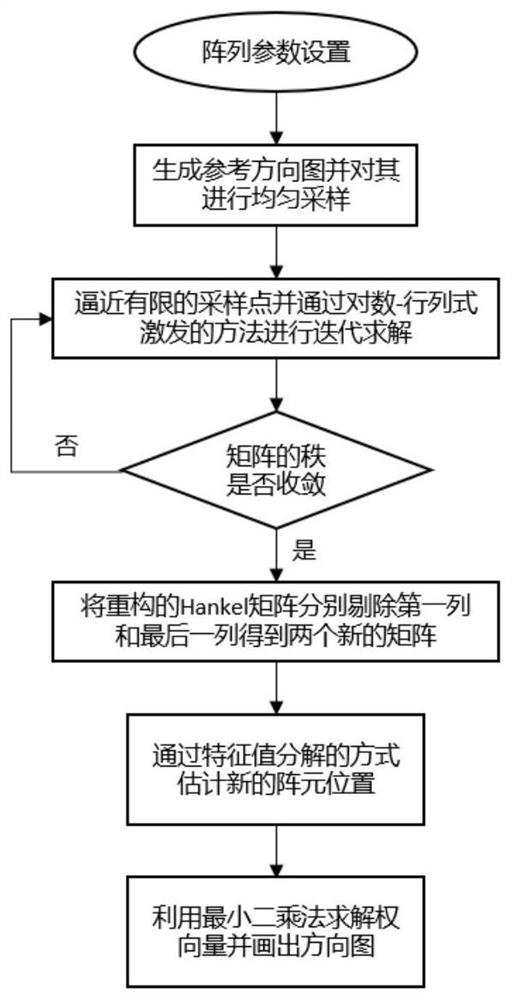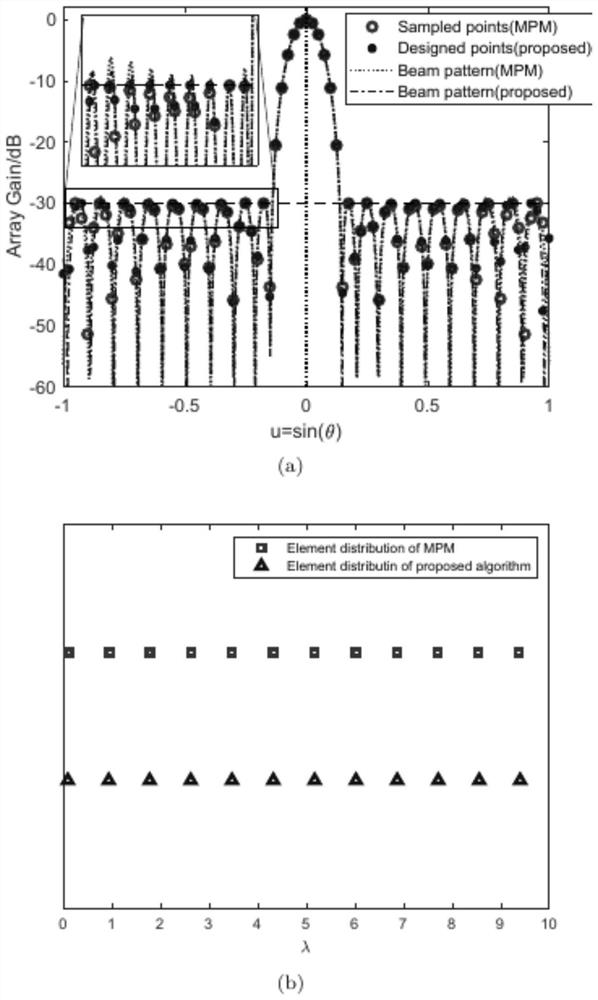Sparse linear array radar arraying method based on low-rank Hankel matrix completion
A matrix completion and matrix technology, applied to sparse arrays. field, it can solve the problems of large amount of calculation and large dependence on the reference pattern, and achieve fast convergence, saving degrees of freedom, and good results
- Summary
- Abstract
- Description
- Claims
- Application Information
AI Technical Summary
Problems solved by technology
Method used
Image
Examples
Embodiment Construction
[0052] refer to figure 1 , the specific implementation steps of the present invention are as follows:
[0053] Step 1, construct an initial reference pattern and uniformly sample it.
[0054] Consider a uniform linear array radar with the number of array elements M, and express the pattern of the uniform linear array radar, namely:
[0055]
[0056] Among them, u=sinθ, θ represents the angle, and uniform sampling of f(θ) can be obtained;
[0057] x(n)=F(u)| u=nΔ
[0058] where n=-N,-N+1, . . . , N.
[0059] Constructs the Hankel matrix Y.
[0060] First, refer to figure 2 , define a Hankelization formula:
[0061]
[0062] Then, the following Hankel matrix is constructed by using the sampling points of the reference pattern:
[0063]
[0064] Wherein L is a matrix beam parameter, and satisfies 2N-L≥M, L+1≥M.
[0065] Step 2: Construct an optimization objective function for rank minimization
[0066] 2a) From matrix beam theory, we get:
[0067] rank(Y)=M...
PUM
 Login to View More
Login to View More Abstract
Description
Claims
Application Information
 Login to View More
Login to View More - R&D
- Intellectual Property
- Life Sciences
- Materials
- Tech Scout
- Unparalleled Data Quality
- Higher Quality Content
- 60% Fewer Hallucinations
Browse by: Latest US Patents, China's latest patents, Technical Efficacy Thesaurus, Application Domain, Technology Topic, Popular Technical Reports.
© 2025 PatSnap. All rights reserved.Legal|Privacy policy|Modern Slavery Act Transparency Statement|Sitemap|About US| Contact US: help@patsnap.com



